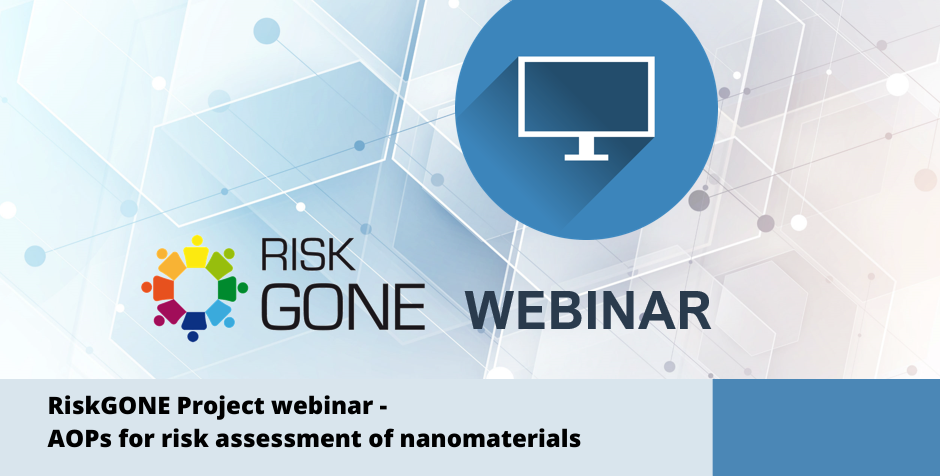Webinar recording: identifying health hazards with AOPs – watch it anytime!

On 5th June, RiskGONE held its second webinar, attended by more than 40 participants. This time project partners focused the discussion on how to use Adverse Outcome Pathways (AOPs), a risk-assessment method, to analyse the possible hazards nanomaterials can pose to human health.
Experts from KU Leuven (Belgium), the Institute for Medical Research and Occupational Health (Croatia) and the QSAR lab (Poland) explained how they are applying this method to tracing nanomaterials risks.
AOPs could help researchers find negative effects from nanomaterials more efficiently, and reduce the need for animal testing. So, how do AOPs work in practice? The idea behind is that researchers create pathways that link a first event observable at molecular level with subsequent effects in the human body and the final problems they can pose to human health, which can be as serious as cancer, neurodegeneration or decreased fertility.
These pathways are living documents that can be accessed online through the AOP Wiki website and be modified as fresh evidence reveals new or different effects of nanomaterials in human health. The AOPs system is a tool launched by the OECD in 2012 to systematically assess toxicological risks in chemicals. Researchers in the RiskGONE project propose using these AOPs to map possible hazards in using nanomaterials too.
Eager to know more? We have recorded the webinar for you! Simply click on the links below to watch the webinar sections of your interest:
- Introduction to the AOP Knowledge base
- AOPs for nanomaterials
- Quantitative structure-activity relationship (QSARs) in AOPs
- Questions & Answers

